During the corona pandemic, schools in Germany would have to switch to digital teaching. This process had many pitfalls at first. In the smart cities of Ulm and Jena, they quickly embarked on a successful path.
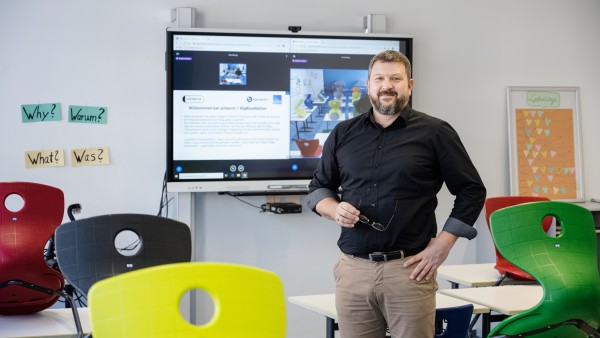
Matthias Weber, Director of the Ulrich-von Ensingen-Schule, in front of the UlmLernt virtual tool.
At the Ulrich von Ensingen School in Ulm, the aim is for the virtual realm to be as real as possible. That is why the classrooms in the teaching tool have the same numbers as the classrooms in the actual school. And sometimes a teacher from a classroom even teaches the pupils who are sitting at home due to coronavirus. They “get a lesson plan on their device,” says Matthias Weber, and enter their “real” classroom by clicking on the link.
Weber is the head of the two-track secondary school with years 5 to 10. She uses the UlmLernt tool for remote learning, which is based on the BigBlueButton video conferencing system. UlmLernt was developed by the municipality itself. The tool has a simple design, for example, it cannot be used to upload and edit data. But “because it’s so simple, teachers who are not very digitally savvy can also use it,” says Christina Baumgartl, Head of IT for schools in the Education and Sports Department of the City of Ulm.
Investments in a digital future
During this second lockdown, as many as 2,500 people use the conference tool at the same time in the morning. The city, which oversees 50 schools, developed UlmLernt at the beginning of the first lockdown in cooperation with the Digital Agenda. “Without them, it wouldn’t have been possible so quickly,” reports Sebastian Fischer, IT Solutions Officer in the Education and Sports Department. The Digital Agenda office, established at the beginning of 2018 and still involved in UlmLernt, is also managing the smart city process. Since 2019, Ulm has been one of the Smart Cities model projects supported by the Federal Ministry of the Interior and Community (BMI) and KfW, which have a total of 820 million euros at their disposal. “We support digital projects that help find ways out of the crisis and that other municipalities can learn from,” says Kay Pöhler, Product Management Infrastructure at KfW.
During the lockdown: Empty classroom in the Ulrich-von-Ensingen-Schule, Ulm.
According to Lord Mayor Gunter Czisch, the city of Ulm has already been investing in digital infrastructure and hardware for pupils and teachers for ten years: “And within the scope of the Digital Pact for Schools, we have been driving this project forward vigorously since 2019.”
Digital participation for all

Presence control: The monitor shows, how many people are using UlmLernt at what time.
At the Ulrich von Ensingen School, all 34 teachers now have a mobile device, all classrooms have a camera and microphone, and there is also a digital board in five classrooms. Most of the 300 pupils also have mobile devices, thanks to the city, which lends out tablets and laptops, and a company that donated used laptops. Children from socially disadvantaged families who only have mobile phones or whose data contracts are not sufficient for several hours of remote learning can take part in online lessons from school and are supervised there.
“We must make it possible for everyone to participate digitally,” says Stefanie Teichmann, an education management employee in the integrated social planning team of the city of Jena. Peter Jerie, head of the municipality’s media centre, lists the hardware-related problems of remote learning: households without WiFi, families where the only mobile device is needed for working from home, teachers with outdated devices.
The city has significantly upgraded in the second lockdown. A total of 1,300 devices were purchased and distributed. Jerie’s department, municipal service provider for the 27 municipal schools, was increased from three to eight staff members during the pandemic.
Higher acceptance for smart solutions
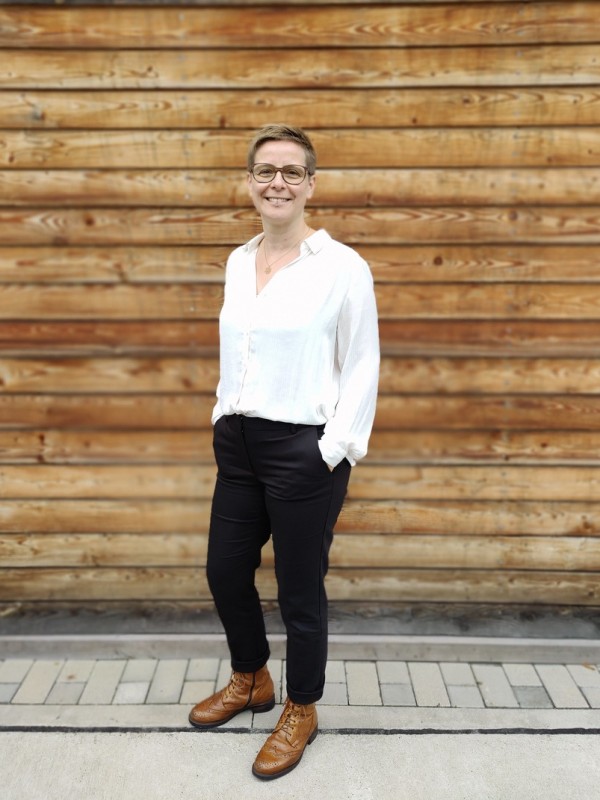
Manuela Meyer, Chief Digital Officer of Jena, is responsible for the Smart City project focusing on the WISSENsAllmende platform.
A survey conducted among parents in Jena in May 2020 showed that 57 per cent would like digital education to play a greater role in regular school life. The high acceptance of digital education probably also has something to do with the fact that “according to the Federal Statistical Office, we have the third-highest density of academics among Germany’s cities,” as Manuela Meyer, the city’s Chief Digital Officer, explains. The witelo e.V. network (learning centres in Jena for science and technology) has been in existence since 2014, through which educational institutions and companies mainly offer courses in STEM subjects. “They are always fully booked,” says Meyer, who oversees Jena’s Smart City project, which is funded by the BMI and KfW. The booming university city has created a municipal platform supplied with data by private and public players for the benefit of the public.
During the second lockdown, the acceptance of smart solutions rose considerably, especially among teachers, as the interviewees in Ulm and Jena agree. Digital education will continue to have a spot on the school curriculum after the lockdown. Weber would also like to communicate with parents using an app and thinks that in future part-time teachers could also easily participate in teaching staff conferences by video. Despite all the positive opportunities offered by virtual processes, Weber also emphasises: “We need personal contact again.”
Siri Eichhorn, an eight-year-old student at the Jörg Syrlin School in Ulm, also misses personal contact. During the second lockdown, she was supported at home by her grandfather Reinhold Eichhorn and had remote learning lessons on her tablet three times a week for one and a half hours each. Worksheets were picked up on Mondays and handed in on Fridays.
“It is second nature for Siri to use a platform like UlmLernt,” observes Eichhorn, a former vocational school teacher. The 72-year-old’s assessment of digital lessons: “It all worked out wonderfully.” And yet: “My granddaughter,” he says, “would love to be back in school.”
Published on KfW Stories on 24 February 2021, updated on 22 July 2023

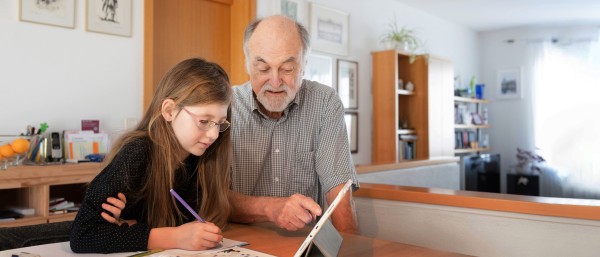



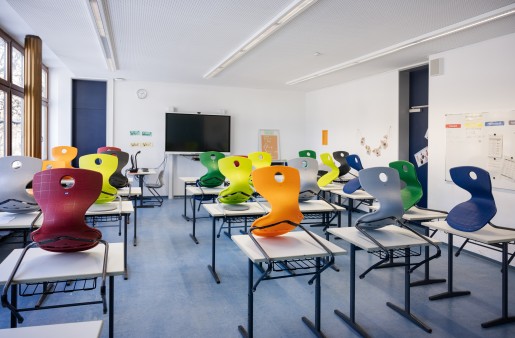
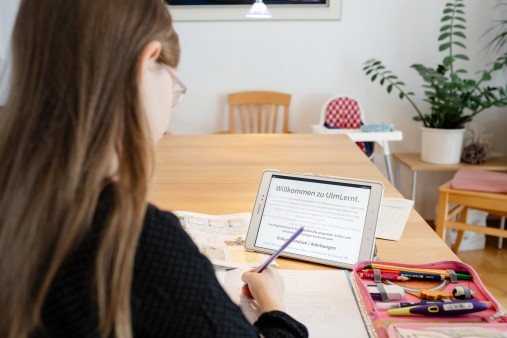
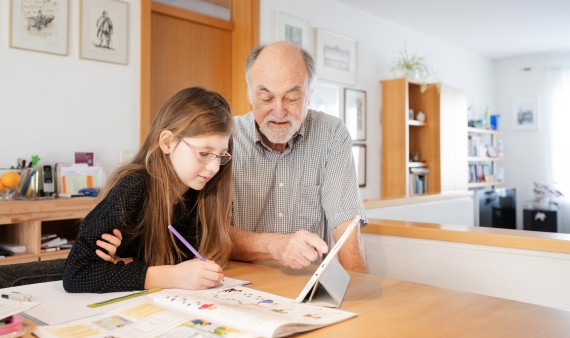
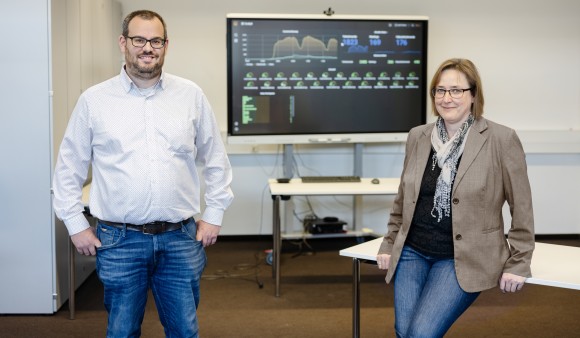




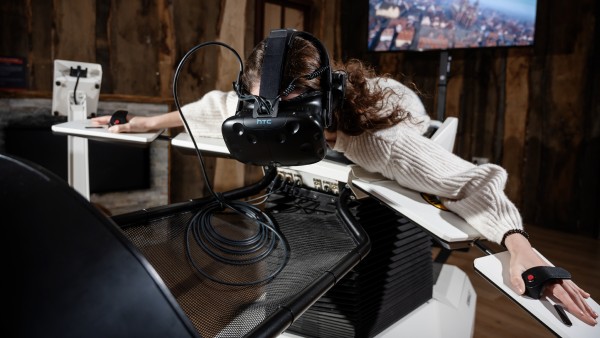
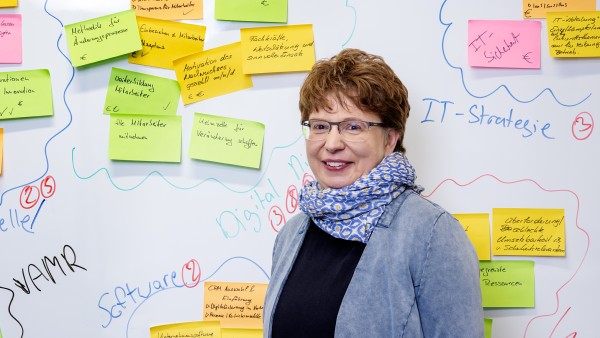
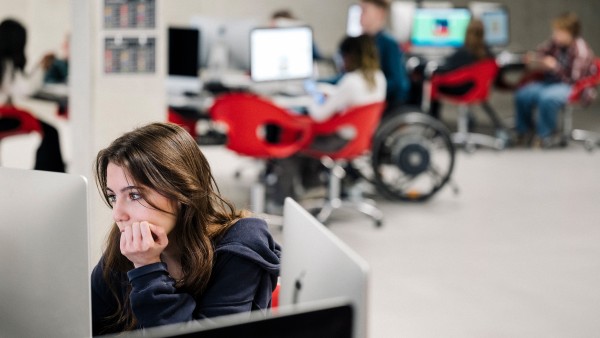
Data protection principles
If you click on one of the following icons, your data will be sent to the corresponding social network.
Privacy information